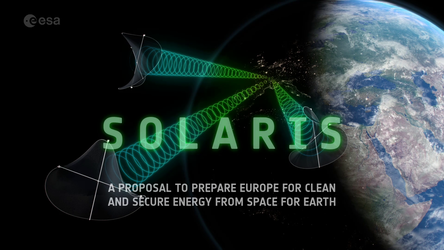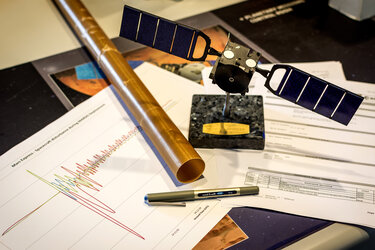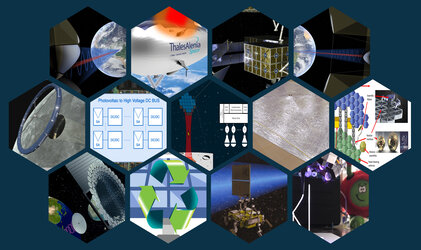SBSP history
The underlying concept of Space-Based Solar Power dates back to the prehistory of the Space Age. In 1923 Russian theorist Konstantin Tsiolkovsky, one of the original prophets of space travel, proposed deploying a system of mirrors in space to concentrate a strong beam of sunlight down to Earth. He calculated the heat gathered using a 10 sq. m absorbing area might boil ten big coffee cups inside two minutes – although he conceded cloudy days might prove a problem for this method of cooking.

In 1941 science fiction author Isaac Asimov set his short story ‘Reason’ on a solar power satellite that is beaming energy in the form of (weather-proof) microwave beams down not only down to Earth but also to other Solar System settlements.
Then in 1968 the first engineering design for a solar power satellite was produced by Czech-born NASA engineer Peter Glaser. In 1973 he was granted the patent for his microwave-based method of transmitting power from the orbital down to the receiving ‘rectenna’ on the ground. His work built on earlier wireless power transmission research by US electrical engineer William C Brown, who in 1964 managed to power the flight of a model helicopter using microwaves beamed from the ground.
The 1970s saw extensive research into Space-Based Solar Power undertaken by NASA and the US Department of Energy and in 1979 ESA performed its first study of the topic: ‘European Aspects of Solar Power Satellites.’ But bearing in mind the mammoth size solar power satellites would need to be in order to operate at optimal efficiency, the problem that studies kept coming back to was that high launch costs would make such space-based power uneconomic.
In the following decade wireless power transmission was demonstrated as a method of keeping aircraft aloft indefinitely in Canada and Japan, while a 1986 symposium in Paris showed interest remained high in Space Based Solar Power, and the decade’s end saw it proposed as a method to help settle the Moon, including the sintering of lunar regolith.

International symposia continued into the 1990s, and in 1997 NASA concluded a ‘Fresh Look’ study on the topic, taking note of orbital assembly experience gained through the construction of the International Space Station, but again noting the requirements for substantial reductions in launch costs. ESA included Space Based Solar Power in a 1999 study of space utilisation.
In 2003 ESA’s Advanced Concepts Team commenced the European Solar Power from Space Programme, assessing the validity and viability of solar power from space concepts in light of advances in terrestrial solar power technologies and energy markets, identifying Space Based Solar Power as a promising contribution to durable European CO2 emissions reductions.
In the years that followed the Chinese and Indian space programmes indicated their own interest. In 2020 the US Naval Research Laboratory launched a test satellite, with other demonstrator missions announced by nations including China, Japan and the UK.



















